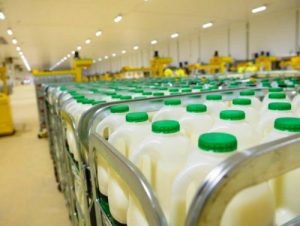Region’s consumer confidence at highest level in three years

Confidence among consumers in Yorkshire and the Humber is at its highest since the third quarter of 2015.
According to the latest Consumer Tracker report from Deloitte, overall consumer confidence in the region stood at -6% in Q1 2018 – more than double the -13% figure for the same quarter in 2017 and up on the -8% recorded in the final quarter of 2017. It is the highest since the -4% recorded in Q3 2015.
Across the UK, the quarterly survey of more than 3,000 consumers saw overall confidence rise to -6% in Q1 2018, up from -7% the previous quarter. Consumer
confidence in the UK is now at its highest level since Q4 2016.
Although still in negative territory, the uptick in sentiment in the first three months of 2018 is an indication that the economic pressures that have been facing Yorkshire consumers over the last year may be starting to ease, says Deloitte.
Andrew Coticelli, partner and consumer business lead for Deloitte in Yorkshire, said: “Confidence in the region has crept up against a backdrop of consumer-friendly
economic conditions. Unemployment has hit a 43-year low and is stoking wage pressures, while falling inflation boosts consumer spending power and reduces the
need for rate rises.
“It remains to be seen to what extent consumers will continue to exercise caution in 2018, and not-too-distant memories of tougher times could yet outweigh consumers’ willingness to spend.”
Despite UK unemployment being at a historic low, job security remains a key area of concern for consumers, and has fallen by two percentage points compared to Q4 2017.
There is growing confidence about job opportunities, which rose one percentage point compared to the previous quarter, but Q1 2018 saw a series of high-profile administrations alongside a number of large consumer businesses announcing significant headcount reductions, which may have weighed heavily on consumers’ minds.
According to the Consumer Tracker research, consumers are continuing to prioritise their spending on essential categories such as utility bills, transport and food and drink, with spending rising by one percentage point to +13% compared to the same period last year. By contrast, discretionary spending, which includes going out, furniture and electrical appliances, remains flat, at -6% compared to a year ago.
Coticelli added: “Consumer business, and in particular the retail and casual dining sectors, have had to face unprecedented challenges over the last year. Cautious
spending, increased competition and rising labour and rental costs have been the cause for much head scratching across the sector.
“Looking ahead, Q2 confidence may improve further with the belated arrival of warmer weather and optimism ahead of the World Cup, which is an event that has historically provided a boost to consumer spending across a range of categories, especially if the national team progresses to the later stages of the competition.”








